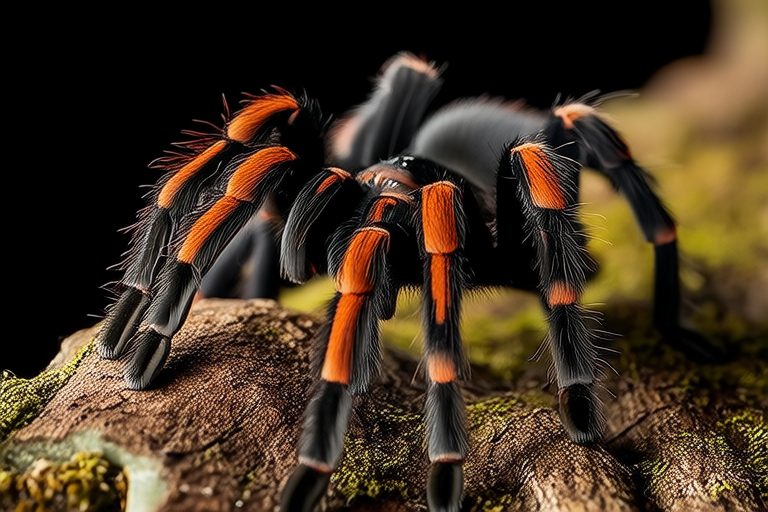How to Care for Your Mexican Redknee Tarantula Like a Pro
The Mexican Redknee Tarantula (Buthus mexicanus) is a popular choice among tarantula enthusiasts due to its striking appearance and relatively calm demeanor. Caring for this species requires understanding their specific needs regarding habitat, diet, and health. This guide will provide you with all the information necessary to care for your Mexican Redknee Tarantula like a pro.
Habitat Setup
A well-designed habitat is crucial for the health and happiness of your Mexican Redknee Tarantula. Start by choosing an appropriate enclosure size; adult spiders need at least a 10-gallon tank (approximately 30 liters) with a height-to-width ratio of about 1:1. Ensure the enclosure has secure ventilation holes or mesh on top for proper air circulation but no escape routes.
Substrate is another important aspect of the habitat. Use a mix of coconut fiber, peat moss, and vermiculite in equal parts as it retains moisture well without becoming soggy. A layer of sphagnum moss can be added on top for aesthetics and easier cleaning. Keep the substrate moist but not wet; aim for 60-70% humidity.
In addition to substrate, provide ample hiding spots such as cork bark tubes or half logs that allow the spider to retreat when feeling threatened. These items also serve as climbing structures which promote natural behaviors.
Maintain a temperature range between 75°F and 85°F (24°C – 29°C), with a basking spot reaching up to 90°F (32°C). Use a thermometer and hygrometer to monitor these conditions accurately.
Diet Specifics
Mexican Redknee Tarantulas are opportunistic feeders, meaning they will eat whatever prey item is offered. Crickets are typically used as staple food, but supplement their diet with other insects like dubia roaches, mealworms, and superworms occasionally. Avoid offering overly large prey items that could injure the spider.
Feed adults once every week or two depending on how active they appear. Juveniles require more frequent meals, approximately twice weekly. Always remove uneaten prey after 24 hours to prevent potential harm from overfeeding.
Handling and Interaction Guidelines
While Mexican Redknee Tarantulas are generally docile, handling them should still be approached cautiously. Gently coax the spider out of its hide using a soft brush or stick before gently lifting it into your hand. Support the body and legs evenly while holding. Never grab the spider by its abdomen or tail.
Interaction sessions should be brief and infrequent to avoid stressing the animal. Some experts recommend limiting physical contact to once per month unless absolutely necessary.
Health Monitoring Tips
Regularly inspect your tarantula for signs of illness such as lethargy, loss of appetite, or abnormal leg movements. Common issues include mites, fungal infections, and digestive problems. If you notice any concerning symptoms, consult a veterinarian specializing in exotic pets immediately.
To prevent health issues, maintain clean living conditions by spot-cleaning daily and performing full substrate changes every few months. Quarantine new acquisitions for several weeks before introducing them to existing populations.
Molting Process Explanation
During molting, the tarantula sheds its exoskeleton to grow. This process can take anywhere from days to weeks. Prior to molting, the spider may become less active and stop eating. Provide a shallow water dish during this time to aid hydration.
Do not disturb the spider while it is molting. Afterward, ensure the old skin is removed completely and check for any missing appendages or deformities. Feed sparingly until the spider has fully recovered.
Environmental Enrichment Ideas
To encourage natural behaviors, consider adding additional climbing structures, tunnels, or plants to the enclosure. Providing varied textures within the substrate can stimulate digging behavior. Rotate these enrichments periodically to keep things interesting.
Safety Precautions
Always handle your tarantula with care to protect yourself from bites or urticating hairs. Wear gloves if needed and wash hands thoroughly afterward. For the spider’s safety, ensure there are no loose objects inside the enclosure that could cause injury.
